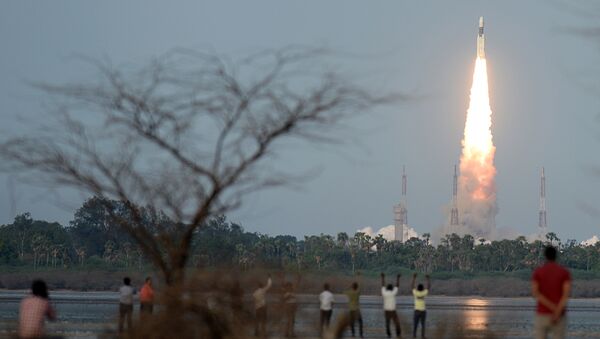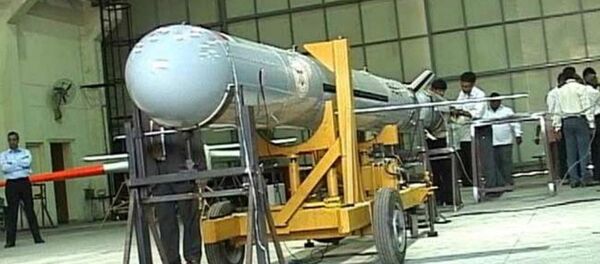New Delhi (Sputnik) — The semi-cryogenic engine uses refined kerosene instead of liquid hydrogen, which is used in combination with liquid oxygen as the propellant in the cryogenic engines. The liquid oxygen will still be used as the oxidizer.
"Various tests are in progress on the engine. Of the four turbo pumps in it, three have undergone tests at the ISRO Propulsion Complex, Mahendragiri. We plan to have the engine ready by 2019-end, the stage by 2020-end and the first flight by 2021," The New Indian Express quoted S. Somanath, director, Liquid Propulsion Systems Centre (LPSC) as saying.
"The idea is to replace the second stage of the GSLV Mk-III, which now uses a liquid stage, with the semi-cryo. The rocket will retain the cryogenic upper, third stage. The advantage of inducing the semi-cryogenic stage is the payload capacity of the GSLV Mk-III will increase from four tons to six tons. The ability to launch higher payload is commercially enticing proposition as well and put India among a select few countries with that capability," Group Captain Ajey Lele (Retd.), Senior Fellow at the Institute for Defence Studies and Analyses, New Delhi, told Sputnik.
"Kerosene as a fuel has advantages of being an eco-friendly and cost-effective option. Unlike liquid hydrogen — which has to be stored at (-)253 degree Celsius, it is stable at normal temperature," Lele said.
On June 5, India launched the GSLV Mark III carrying the 3,136kg GSAT-19 communication satellite from the Satish Dhawan Space Centre in Sriharikota, Andhra Pradesh.





